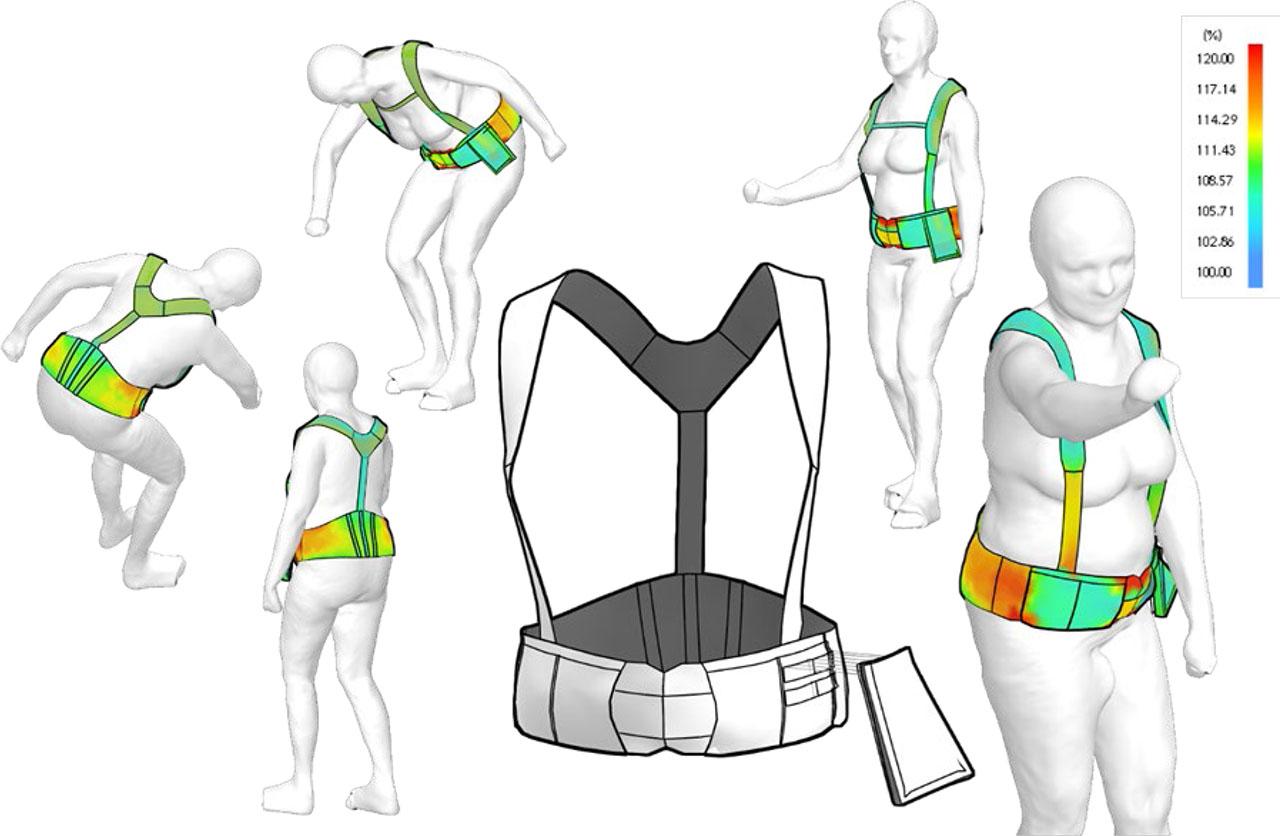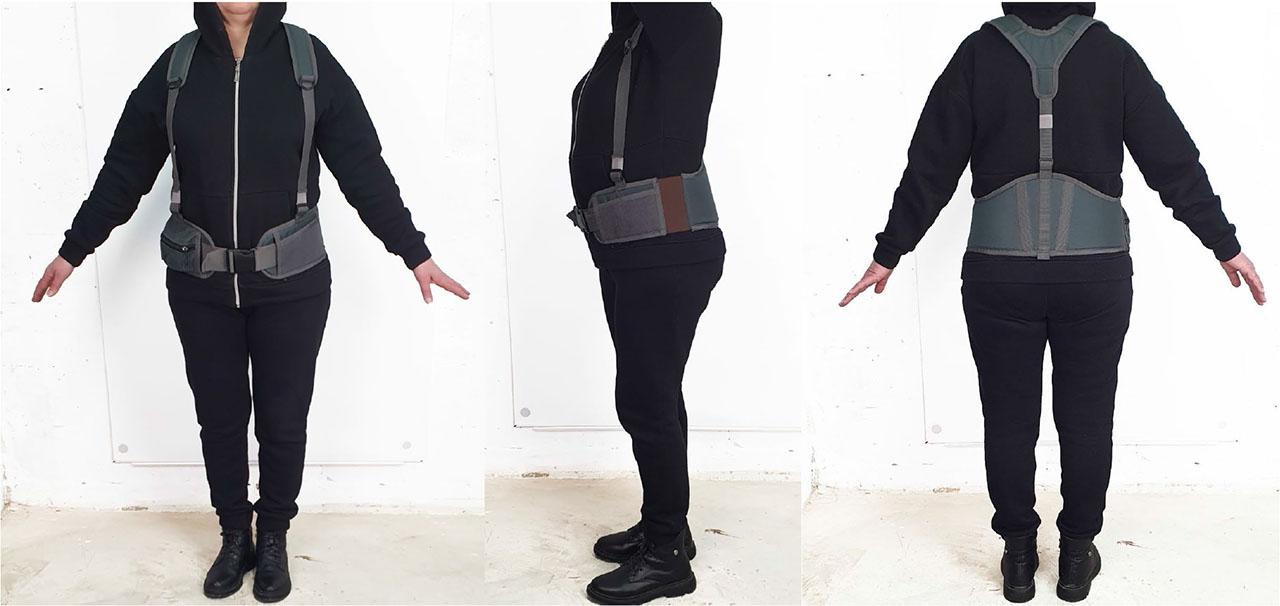Fig. 1.

Fig. 2.

Fig. 3.

Fig. 4.

Values of material characteristics measured by a Browzwear's fabric analyzer FAB 2_0
| Material | Fabric weight (g/m2) | Fabric thickness (mm) | Resistance to stretch, warp/weft (N/m) | Resistance to bend, warp/weft (dyn*cm) | Resistance to shear (N/m) |
|---|---|---|---|---|---|
| 330D CORDURA® Classic, 100 PA 6.6 | 185 | 0.52 | 3468.76/3186.43 | 1463.89/2180.72 | 56.035 |
| 3D knitted fabric, 100 PE | 300 | 3.57 | 403.81/296.45 | 2802.8/2701.55 | 212.38 |
Key requirements and considerations for clothing designed for individuals with dementia symptoms
| Requirements | Features | Functions |
|---|---|---|
| Enhanced comfort | Soft fabrics | Using soft, hypoallergenic fabrics such as cotton or bamboo minimizes discomfort and alleviates skin irritation. |
| Elastic waistbands | Elastic waistbands on pants enhance comfort and facilitate the dressing process. | |
| Layering | Lightweight layers allow for effective temperature regulation throughout the day. | |
| Ease of use | Simple fastenings | Use of Velcro, magnetic closures, or large, easy-to-use buttons in place of traditional buttons and zippers |
| Loose fit | Garments should fit loosely, with large openings for easy and comfortable dressing. | |
| Safety | Non-slip footwear | Non-slip socks or shoes can reduce the risk of falls |
| Bright colors | Brightly colored or patterned clothing can help patients recognize their clothing more easily and may enhance their mood or prevent depressive symptoms. | |
| Dignity | Stylish designs | Attire that is both stylish and comfortable plays a vital role in preserving the dignity and self-esteem of patients. |
| Adaptive underwear | Consideration of options that facilitate restroom use is important in maintaining dignity during daily activities. | |
| Functionality | Pockets | Built-in pockets provide patients with the ability to carry personal items, ensuring effective storage solutions and minimizing the risk of loss. |
| Elastic and adjustable features | Adjustable waistbands, cuffs, and similar features should be designed for easy modification, ensuring a snug yet comfortable fit. | |
| Ease of care | Machine washable | The durability of clothing to withstand frequent laundering is essential for practicality. |
| Stain-resistant fabrics | Selecting fabrics that exhibit stain-resistant properties is recommended for maintaining a clean appearance with minimal effort. | |
| Lightening the caregiver's load | Adaptive clothing features | Adaptive design can streamline dressing routines, making them less time-consuming and stressful for caregivers. |
| Additional considerations | Sensory issues | Patients with dementia may have heightened sensitivity to textures and tags; tagless options are preferred. |
| Weather appropriateness | The clothing provided should be suitable for different weather conditions, ensuring warmth in the winter and coolness in the summer. |